 "ttyymmnn" (ttyymmnn)
"ttyymmnn" (ttyymmnn)
08/28/2018 at 12:35 • Filed to: wingspan, planelopnik history, Planelopnik
 6
6
 27
27
 "ttyymmnn" (ttyymmnn)
"ttyymmnn" (ttyymmnn)
08/28/2018 at 12:35 • Filed to: wingspan, planelopnik history, Planelopnik |  6 6
|  27 27 |
!!! UNKNOWN CONTENT TYPE !!!
Welcome to
This Date in Aviation History
, getting of you caught up on milestones, important historical events and people in aviation from August 25 through August 28.
!!! UNKNOWN CONTENT TYPE !!!

(Author unknown)
August 26, 1959 – The first VC-137 enters service. In 1943, President Franklin Delano Roosevelt became the first US President to fly on an airplane for official government business when he traveled to Casablanca on the Moroccan coast for a war strategy meeting with British Prime Minister Winston Churchill. President Roosevelt made the trip in a !!!error: Indecipherable SUB-paragraph formatting!!! flying boat named the Yankee Clipper . After the Boeing 314, Roosevelt flew in a !!!error: Indecipherable SUB-paragraph formatting!!! named the Flying White House but popularly known as Sacred Cow , the first purpose-built presidential aircraft, when he went to the !!!error: Indecipherable SUB-paragraph formatting!!! , and his successor, President Harry S. Truman, used a !!!error: Indecipherable SUB-paragraph formatting!!! named Independence . President Dwight Eisenhower then flew in two different !!!error: Indecipherable SUB-paragraph formatting!!! named Columbine II and Columbine III .
But as the world entered the jet age following WWII, and with the arrival of the !!!error: Indecipherable SUB-paragraph formatting!!! , America’s first jet airliner, in 1958, it was clear to the Air Force that it was time for the President to transition to a jet-powered transport. In 1958, the Air Force accepted its first 707, dubbed the VC-137A, and it was given the designation Special Air Mission (SAM) 970 based on its serial number. Two more 707s were then added and were given the designations SAM 971 and SAM 972.

President Kennedy exits SAM 970. The aircraft’s serial number is visible beneath the pilot’s window. (NASA)
The new aircraft featured living and working spaces for the president and his staff, as well as modern communications equipment. President Eisenhower was the first US President to fly in the new airliner, visiting 11 Asian nations during his “Flight to Peace” goodwill tour in 1959. But the SAM jets used by Eisenhower, and briefly by his successor, !!!error: Indecipherable SUB-paragraph formatting!!! , looked nothing like the iconic blue and white jets we see today. The original 707s featured a rather gaudy, bright red-orange nose and bright orange tail stripe. It wasn’t until the next generation of !!!error: Indecipherable SUB-paragraph formatting!!! purchased for President Kennedy that the airliners decked out in the famous blue, white and silver livery designed by !!!error: Indecipherable SUB-paragraph formatting!!! .
 !!!CAPTION ERROR: MAY BE MULTI-LINE OR CONTAIN LINK!!!
!!!CAPTION ERROR: MAY BE MULTI-LINE OR CONTAIN LINK!!!
SAM 970 served Presidents Eisenhower, Kennedy and Lyndon Johnson and, after the original SAM 970 was replaced in 1962 by two newer VC-137Cs (SAM 26000 and SAM 27000), it continued flying VIPs and the Vice President until 1996, with its last executive passenger being Vice President !!!error: Indecipherable SUB-paragraph formatting!!! . SAM 970 is preserved and is on display at the !!!error: Indecipherable SUB-paragraph formatting!!! in Seattle, Washington, while SAM 971, a V137B, resides at the Pima Air and Space Museum in Arizona. SAM 972 was scrapped in 1996.
!!! UNKNOWN CONTENT TYPE !!!

The Gray Ghost and Black Widow fly in formation (US Air Force)
August 27, 1990 – The first flight of the Northrop YF-23.
In war,
control of the airspace over the battlefield is of paramount importance and, by the 1980s, the US Air Force needed to counter the latest generation of Russian fighters such as the
!!!error: Indecipherable SUB-paragraph formatting!!!
and
!!!error: Indecipherable SUB-paragraph formatting!!!
. The Air Force issued requirements for a new
!!!error: Indecipherable SUB-paragraph formatting!!!
that would take advantage of developments in new construction materials, engines that could provide
!!!error: Indecipherable SUB-paragraph formatting!!!
and
!!!error: Indecipherable SUB-paragraph formatting!!!
, and, perhaps most importantly, the latest developments in
!!!error: Indecipherable SUB-paragraph formatting!!!
. While stealth doesn’t make an aircraft invisible, it does reduce its radar signature so that it can be difficult to detect, and stealth technology was first demonstrated brilliantly by the
!!!error: Indecipherable SUB-paragraph formatting!!!
.

This head-on view of the YF-23 displays the stealthy design features of the radical air superiority fighter (US Air Force)
In 1981, the year that the F-117 took its maiden flight (though designated as a fighter, the Nighthawk is truly a tactical bomber), the Air Force initiated its !!!error: Indecipherable SUB-paragraph formatting!!! (ATF) program to find a replacement for the !!!error: Indecipherable SUB-paragraph formatting!!! in the air superiority role. Two groups of manufacturers—Lockheed/Boeing/General Dynamics and Northrop/McDonnell Douglas—paired with Pratt & Whitney and General Electric to produce two prototype aircraft each. The Lockheed-led group proposed the !!!error: Indecipherable SUB-paragraph formatting!!! , which incorporated stealth capability along with thrust-vectoring engines for increased maneuverability. The Northrop-led group offered the !!!error: Indecipherable SUB-paragraph formatting!!! (the second prototype was dubbed Gray Ghost due to its lighter paint scheme). The Northrop proposal placed greater emphasis on stealthy design but saved weight and complexity by eliminating thrust-vectoring. The YF-23 also made extensive use of the !!!error: Indecipherable SUB-paragraph formatting!!! to reduce drag at !!!error: Indecipherable SUB-paragraph formatting!!! speeds. The first YF-23 was powered by a pair of !!!error: Indecipherable SUB-paragraph formatting!!! afterburning turbofans, while the second received !!!error: Indecipherable SUB-paragraph formatting!!! engines. To increase the stealthiness of the fighter, the exhaust from the engines was routed through troughs lined with materials to reduce the aircraft’s heat signature.

The YF-22 and the YF-23 fly in formation during testing and evaluation (US Air Force)
Both aircraft underwent four years of testing and competition, during which the YF-23 proved to be stealthier and faster than the YF-22. The YF-22, with its vectored thrust, proved to be more agile. On April 23, 1991, the Air Force announced that the Lockheed design was the winner, and the YF-22 entered production as the !!!error: Indecipherable SUB-paragraph formatting!!! in 1996. Both YF-23 prototypes were sent to !!!error: Indecipherable SUB-paragraph formatting!!! for use as test beds, but they were never flown again. Some consideration was given to having Northrop develop a carrier-based version of the YF-23 for the US Navy, or an interim bomber version for the Air Force, but those plans never came to fruition. The first prototype is now housed at the !!!error: Indecipherable SUB-paragraph formatting!!! in Ohio, and the second is on display at the !!!error: Indecipherable SUB-paragraph formatting!!! in California.
!!! UNKNOWN CONTENT TYPE !!!
Short Takeoff
!!! UNKNOWN CONTENT TYPE !!!

(NASA)
August 25, 2012 – The death of Neil Armstrong . Born on August 5, 1930 near Wapakoneta, Ohio, Armstrong took his first flight at age five on board a !!!error: Indecipherable SUB-paragraph formatting!!! . After beginning an engineering degree at Purdue University at age 17, Armstrong joined the US Navy, where he flew the !!!error: Indecipherable SUB-paragraph formatting!!! in Korea. Armstrong then served as a test pilot before joining the astronaut program, where he was selected as Command Pilot for the !!!error: Indecipherable SUB-paragraph formatting!!! mission in 1966 which performed the first successful docking in space. In 1967, Armstrong was chosen along with 17 other astronauts who formed the crews for the !!!error: Indecipherable SUB-paragraph formatting!!! missions that would eventually take astronauts to the Moon. Armstrong was tapped as the commander of !!!error: Indecipherable SUB-paragraph formatting!!! , the mission that put the first human footprint on the lunar surface . Uttering the famous words, “That’s one small step for [a] man, one giant leap for mankind,” Armstrong set foot on the Moon at 2:56 UTC on July 21, 1969. He retired from NASA following that flight, and became a college professor and businessman before his death in 2012 at age 82.
!!! UNKNOWN CONTENT TYPE !!!

(Tim Shaffer)
August 25, 1995 – The first flight of the Airbus A319,
a narrow-body, short-to-medium-range airliner that was developed from the
!!!error: Indecipherable SUB-paragraph formatting!!!
. A shorter version of the A320, the A319 was developed based on a request by
!!!error: Indecipherable SUB-paragraph formatting!!!
of
!!!error: Indecipherable SUB-paragraph formatting!!!
(IFLC) and was intended to provide direct competition to the
!!!error: Indecipherable SUB-paragraph formatting!!!
. Though it carries slightly fewer passengers than the A320, it has the same fuel capacity, thus the range is extended up to 3,700 nautical miles with the addition
!!!error: Indecipherable SUB-paragraph formatting!!!
(called
Sharklets
by Airbus). Just under 1,500 A319s have been produced, and it is in service with over 100 operators worldwide.
!!! UNKNOWN CONTENT TYPE !!!
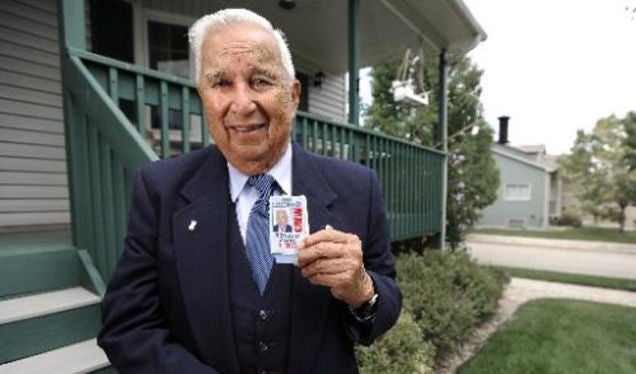 !!!CAPTION ERROR: MAY BE MULTI-LINE OR CONTAIN LINK!!!
!!!CAPTION ERROR: MAY BE MULTI-LINE OR CONTAIN LINK!!!
August 26, 2012 – Ron Akana retires as the longest-serving flight attendant in history. Born in 1928 in Honolulu, Hawai’i, Akana responded to an advertisement placed by !!!error: Indecipherable SUB-paragraph formatting!!! in 1949 to fill a steward position. A college student at the time, Akana said that his main reason for joining United was the opportunity to fly to the mainland. His first flight on a !!!error: Indecipherable SUB-paragraph formatting!!! began a 63-year run of service, with only a two-year interruption from 1950-1951 to serve in the Korean War. After spending his entire career with United, Akana retired after a flight from Denver to Kauai having logged 200 million airmiles and having crossed the Pacific Ocean 10,000 times.
!!! UNKNOWN CONTENT TYPE !!!
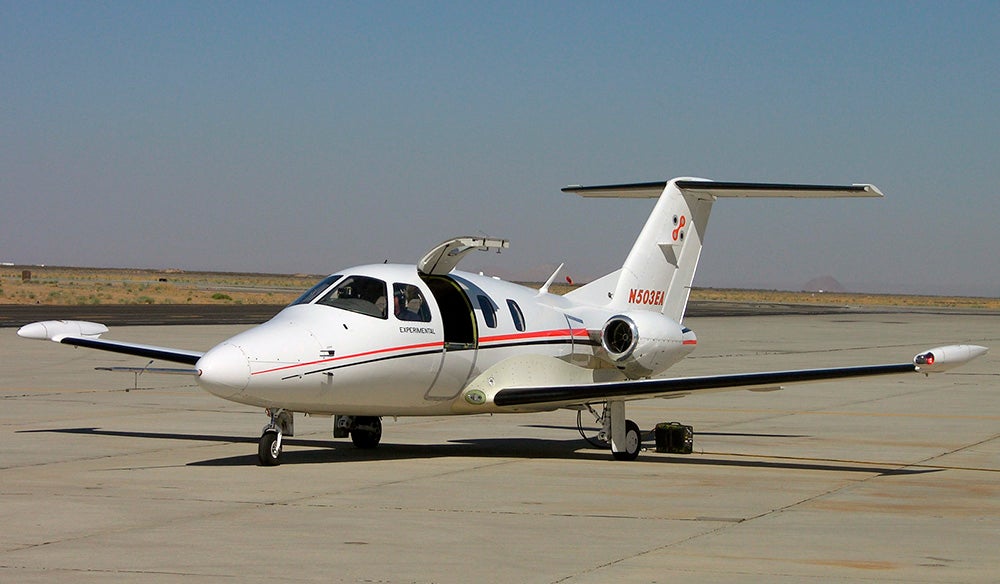 !!!CAPTION ERROR: MAY BE MULTI-LINE OR CONTAIN LINK!!!
!!!CAPTION ERROR: MAY BE MULTI-LINE OR CONTAIN LINK!!!
August 26, 2002 – The first flight of the Eclipse 500,
a small, six-seat business jet and the first in a new class of
!!!error: Indecipherable SUB-paragraph formatting!!!
(VLJ). Previously called microjets, VLJs are approved for single-pilot operation and seat four to eight passengers with a maximum take-off weight (MTOW) of under 10,000 pounds. The Eclipse 500 is based on the
!!!error: Indecipherable SUB-paragraph formatting!!!
which was designed by
!!!error: Indecipherable SUB-paragraph formatting!!!
and is powered by a pair of
!!!error: Indecipherable SUB-paragraph formatting!!!
turbofans that give it a maximum speed of 425 mph and a range of nearly 1,300 miles.
!!!error: Indecipherable SUB-paragraph formatting!!!
entered bankruptcy in 2008 due to a lack of funding, and production stopped at 560 aircraft. After liquidation,
!!!error: Indecipherable SUB-paragraph formatting!!!
took over, and development of a more advanced
!!!error: Indecipherable SUB-paragraph formatting!!!
is underway.
!!! UNKNOWN CONTENT TYPE !!!
 !!!CAPTION ERROR: MAY BE MULTI-LINE OR CONTAIN LINK!!!
!!!CAPTION ERROR: MAY BE MULTI-LINE OR CONTAIN LINK!!!
August 26, 1975 – The first flight of the McDonnell Douglas YC-15, an unsuccessful entrant into the US Air Force competition to procure a jet-powered replacement for the !!!error: Indecipherable SUB-paragraph formatting!!! . McDonnell Douglas competed against the !!!error: Indecipherable SUB-paragraph formatting!!! for the Air Force contract, but neither aircraft was selected. The YC-15 featured advances such as a !!!error: Indecipherable SUB-paragraph formatting!!! to reduce drag and increase lift, along with !!!error: Indecipherable SUB-paragraph formatting!!! to improve low-speed performance. Only two YC-15 prototypes were built and, while it failed to enter production, many elements of its design served as the basis for the !!!error: Indecipherable SUB-paragraph formatting!!! following McDonnell Douglas’ merger with Boeing in 1997.
!!! UNKNOWN CONTENT TYPE !!!
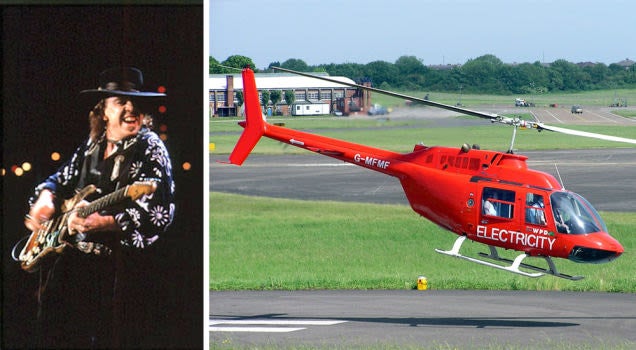 !!!CAPTION ERROR: MAY BE MULTI-LINE OR CONTAIN LINK!!!
!!!CAPTION ERROR: MAY BE MULTI-LINE OR CONTAIN LINK!!!
August 27, 1990 – Blues guitatist Stevie Ray Vaughan is killed in a helicopter crash.
Following a performance with
!!!error: Indecipherable SUB-paragraph formatting!!!
in East Troy, Wisconsin, Vaughan and members of his band boarded four helicopters to take them to Chicago’s
!!!error: Indecipherable SUB-paragraph formatting!!!
. Along with three members of Clapton’s entourage, Vaughan boarded a
!!!error: Indecipherable SUB-paragraph formatting!!!
, and the pilot took off despite haze, fog and low clouds in the area. The flight path required the pilot to fly over a 1,000-foot high ski hill, but the helicopter struck the hill approximately 50 feet from the summit, killing all on board. The National Transportation Safety Board cited pilot error as the cause of the crash, and listed weather conditions as a contributing factor.
!!! UNKNOWN CONTENT TYPE !!!

(Author unknown)
August 27, 1940 – The first flight of the Caproni Campini N.1,
an experimental aircraft powered by a
!!!error: Indecipherable SUB-paragraph formatting!!!
, a precursor to the modern jet engine. The N.1 was incorrectly credited by the
!!!error: Indecipherable SUB-paragraph formatting!!!
(FAI) as the first jet-powered aircraft to take flight, as news of an earlier flight by the
!!!error: Indecipherable SUB-paragraph formatting!!!
had not been widely reported. However, the N.1 was not a true jet, as it used a standard aircraft engine to turn the compressor in an arrangement Caproni called a “thermojet.” Two prototypes were built, and one is on display at the
!!!error: Indecipherable SUB-paragraph formatting!!!
near Rome.
!!! UNKNOWN CONTENT TYPE !!!
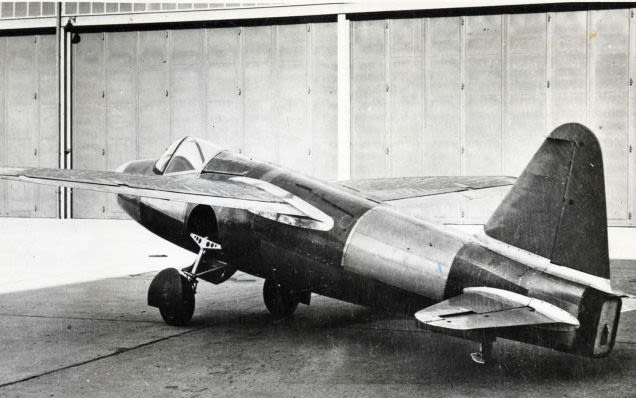
(US Air Force)
August 27, 1939 – The first flight of the Heinkel He 178,
the world’s first practical
!!!error: Indecipherable SUB-paragraph formatting!!!
-powered aircraft. The engine was developed by
!!!error: Indecipherable SUB-paragraph formatting!!!
at the same time as, but separate from, work being done in England by
!!!error: Indecipherable SUB-paragraph formatting!!!
, and was first demonstrated in 1937. Heinkel received little support for his private venture from the German Air Ministry, as they were focused on development of traditional piston engines being made by BMW and Junkers. The He 178 featured a metal fuselage with high-mounted wooden wings and retractable landing gear, though the gear remained fixed during flight tests. Despite the promise of the new powerplant, only one airframe was built by Heinkel, and it was destroyed in an Allied air raid in 1943.
!!! UNKNOWN CONTENT TYPE !!!

(Author unknown)
August 28, 1988 – Three aircraft from the Italian Air Force demonstration team
Frecce Tricolori
crash during an air show at Ramstein Air Force Base.
During the
Flugtag 88
air show, ten Italian
!!!error: Indecipherable SUB-paragraph formatting!!!
trainer aircraft were performing a “pierced heart” maneuver in which two crossing groups of aircraft are split by a single aircraft flying a perpendicular course towards the crowd. As the planes crossed, the solo aircraft struck two others in the formation, raining debris and burning fuel onto the audience below. Sixty-seven spectators were killed, along with the three Italian pilots, and 346 were injured. Germany declared a three-year moratorium on public air shows, and new rules were put in place dictating greater viewing distances and banning maneuvers that were directed towards the crowd.
News reports of the disaster can be seen
!!!error: Indecipherable SUB-paragraph formatting!!!
.
!!! UNKNOWN CONTENT TYPE !!!
Connecting Flights
!!! UNKNOWN CONTENT TYPE !!!
!!! UNKNOWN CONTENT TYPE !!!
!!! UNKNOWN CONTENT TYPE !!!
!!! UNKNOWN CONTENT TYPE !!!
!!! UNKNOWN CONTENT TYPE !!!
If you enjoy these Aviation History posts, please let me know in the comments. And if you missed any of the past articles, you can find them all at
!!!error: Indecipherable SUB-paragraph formatting!!!
. You can also find more stories about aviation, aviators and airplane oddities at
!!!error: Indecipherable SUB-paragraph formatting!!!
.
!!! UNKNOWN CONTENT TYPE !!!
 RamblinRover Luxury-Yacht
> ttyymmnn
RamblinRover Luxury-Yacht
> ttyymmnn
08/28/2018 at 12:46 |
|
a Douglas C-54 Skymaster named the Sacred Cow
I’m not usually one to remark on odd choices of names for things in the military, but that is an odd one. Funny, but odd.
I believe a family
friend
who was on the F-18 team at McDonnell Douglas has
a framed copy of that YF-22/YF-23 picture on his wall.
 ttyymmnn
> RamblinRover Luxury-Yacht
ttyymmnn
> RamblinRover Luxury-Yacht
08/28/2018 at 12:51 |
|
I never thought about the name , but this comes from Air Force itself:
The Douglas VC-54C Skymaster is the first aircraft purpose-built to fly the President of the United States. Carrying the staff transport “VC” designation, the aircraft was officially named The Flying White House . However, the aircraft became better known by its unofficial nickname, Sacred Cow , a reference to the high security surrounding the aircraft and its special status.
 ttyymmnn
> RamblinRover Luxury-Yacht
ttyymmnn
> RamblinRover Luxury-Yacht
08/28/2018 at 12:53 |
|
I went back and edited the text, since I hadn’t heard about that name history.
 user314
> ttyymmnn
user314
> ttyymmnn
08/28/2018 at 12:57 |
|
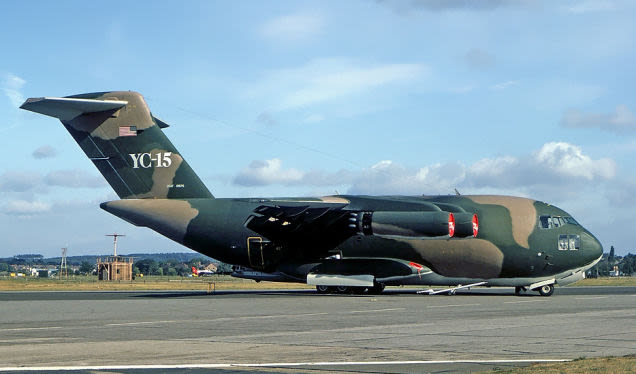
I think after testing they just painted it gray and are trucking it around to airshows:

 WilliamsSW
> ttyymmnn
WilliamsSW
> ttyymmnn
08/28/2018 at 12:57 |
|
Gotta love those guys flying the Caproni with the canopy open. Guessing it was pretty loud and windy.
 RamblinRover Luxury-Yacht
> ttyymmnn
RamblinRover Luxury-Yacht
> ttyymmnn
08/28/2018 at 12:57 |
|
I didn’t question that it might have had that name *officially* - we were after all the country that had bombers named things like Bockscar and Da Poiple Boid and Kickapoo Joy Juice and Ida Wanna and Shed House Mouse...
 RamblinRover Luxury-Yacht
> ttyymmnn
RamblinRover Luxury-Yacht
> ttyymmnn
08/28/2018 at 13:00 |
|
Naming planes silly things based on role isn’t crazy and was consistent with
WWII air
culture for it to get the name in the first place;
I guess I’m slightly
disappointed that they didn’t get official with it.
 ttyymmnn
> RamblinRover Luxury-Yacht
ttyymmnn
> RamblinRover Luxury-Yacht
08/28/2018 at 13:00 |
|
Not at all. Your comment got me looking, and I was able to provide more--and more correct--information.
 ttyymmnn
> user314
ttyymmnn
> user314
08/28/2018 at 13:06 |
|
That actually got me thinking about what happened to the two prototypes. One was brought out of mothballs in 1997 as part to the C-17 program but suffered a huge engine failure that rendered it unflyable and too expensive to repair . It was stored at Palmdale for a while before being put on display at Edwards. The second one was sent to AMARG and eventually broken up.

 facw
> WilliamsSW
facw
> WilliamsSW
08/28/2018 at 13:06 |
|
I’d imagine it wasn’t flying especially fast to make for easier photography (not that it was a very fast plane to begin with). Plus it’s quite possible that when flying an experimental plane, they preferred to have the canopy open in case they needed to bail out quickly.
 ttyymmnn
> WilliamsSW
ttyymmnn
> WilliamsSW
08/28/2018 at 13:08 |
|
I imagine it was. But remember, Navy pilots operated with open canopies on and off the deck for a long time in the early jet era.

 WilliamsSW
> facw
WilliamsSW
> facw
08/28/2018 at 13:09 |
|
Apparently the cockpit got *really* hot, and it was always flown with the canopy open, so the pilot didn’t BBQ.
 WilliamsSW
> ttyymmnn
WilliamsSW
> ttyymmnn
08/28/2018 at 13:10 |
|
Apparently it was basically necessary, due to heat - the cockpit got really hot.
 ttyymmnn
> WilliamsSW
ttyymmnn
> WilliamsSW
08/28/2018 at 13:17 |
|
It’s my understanding that the early Navy jet pilots took and landed with an open canopy as a hold over from the WWII days when it helped with escape should the plane go in the drink. Ejection seats eliminated the need for that expedient, but I believe some pilots carried on the tradition anyway. Here, an F2H Banshee heads for the wire with the canopy open.

 user314
> ttyymmnn
user314
> ttyymmnn
08/28/2018 at 13:21 |
|
Then again, Gutlesses weren’t all that fast...
 WilliamsSW
> ttyymmnn
WilliamsSW
> ttyymmnn
08/28/2018 at 13:21 |
|
Sorry - I was actually referring to the Caproni. I think the engine heat basically forced pilots to fly that aircraft with the canopy open.
Makes sense to have it open for a carrier landing, w/o an ejection seat.
 RamblinRover Luxury-Yacht
> WilliamsSW
RamblinRover Luxury-Yacht
> WilliamsSW
08/28/2018 at 13:24 |
|
One of the nice features of the P-38 in South Pacific service was that the side windows rolled down car-style.

 ttyymmnn
> WilliamsSW
ttyymmnn
> WilliamsSW
08/28/2018 at 13:29 |
|
Oh--gotcha! Actually, I give those guys massive credit for getting inside any of those experimental aircraft back in the day. Nowadays, we do computer modeling and simulators and we’re already fairly certain a new plane will fly. Back then, it was like, “Here are the keys. Go see if it works.”
 ttyymmnn
> user314
ttyymmnn
> user314
08/28/2018 at 13:32 |
|
No, and I’m sure the pilots wanted to get the hell out of them as soon as they could.


 facw
> ttyymmnn
facw
> ttyymmnn
08/28/2018 at 13:52 |
|
Interesting that the AMARG one was broken up. I believe they still have the YC-14 there, and you’d think they’d treat both the YC-14 and YC-15 prototypes roughly the same (the other YC-14 is across the street at Pima Air & Space.)
 ttyymmnn
> facw
ttyymmnn
> facw
08/28/2018 at 14:05 |
|
I can’t find any reason why it was scrapped. Boeing’s historical snapshot doesn’t even say. Here she is going under the knife in 2012.


 Ash78, voting early and often
> ttyymmnn
Ash78, voting early and often
> ttyymmnn
08/28/2018 at 14:36 |
|
The YF-23 was always my favorite and I think they made a slight error in choosing the F-22 for its dogfighting prowess (which is mostly irrelevant today).
I also remember Ramstein, I was about 10 years old and it was the most horrific thing I had ever seen — including watching the Challenger explo
de
just 2 years early with the naked eye. In my mind, astronauts knew they had a dangerous job, but airshow spectators never see that coming...and I had been to a lot of airshows at that point.
 ttyymmnn
> Ash78, voting early and often
ttyymmnn
> Ash78, voting early and often
08/28/2018 at 14:44 |
|
Agreed on the YF-23. I’ve always thought that the AF brass chose the YF-22 partly because it looked more like a “normal” airplane. And the idea of using the 23 as a stealthy medium bomber seems pretty attractive today. As it is, they are talking (again) about turning the Buff into an arsenal ship . Maybe a heavily loaded YF-23 sized aircraft would be a better bet?
I, too, remember Ramstein . My brother was stationed in the Army in Germany at the time, and I remember my mom freaking out that he might have been there (he wasn’t). It’s a tragedy that so many had to die, but air shows are now much safer as a result.
 facw
> ttyymmnn
facw
> ttyymmnn
08/28/2018 at 16:09 |
|
I have my doubts that using the B-52 for anything is really the right move. That design is just so ancient, I can’t help but feel that for any mission you might have the B-52 do, you’d be better off figuring out how to add a weapons bay to a modern airliner (or even a not so modern airliner like the 767). Sure you’d be paying more up front for new air craft, but you’d end up with planes that are more efficient, cheaper to operate, more reliable, have much more parts availability, longer range, and quite possibly higher payload, depending on how you configure the aircraft. It probably wouldn’t be as tough as the B-52, but either way you’d be in serious trouble in contested airspace. If all you need is a bomb/missile truck I’m really not sure that an ancient 8-engined aircraft is the way to go.
 ttyymmnn
> facw
ttyymmnn
> facw
08/28/2018 at 16:18 |
|
What was that Rumsfeld said about going to war with the army you have, not the one you wish you had? It looks like the latest idea for the Buff is to resurrect the arsenal ship concept. Tyler’s got a big article about the future of the B-52 at The War Zone.
 facw
> ttyymmnn
facw
> ttyymmnn
08/28/2018 at 16:27 |
|
Yeah, but seems like it might just be throwing money away. I’m also confused that they would retire the B-1 before the B-52, given that the B-1 is faster, has a much larger payload, is stealthier, and is cheaper to fly (this last point could change once the B-52 gets new engines, but 8-engines are never going to be cheap to fly or maintain). Tyler says B-52s have a much better readiness rate than the B-1, but it seems likely that is because the B-1 has been much more active in the past few years than the B-52.
 ttyymmnn
> facw
ttyymmnn
> facw
08/28/2018 at 16:37 |
|
Honestly, I think the Buff was just built better. But yes, they are flying the wings off of the B-1.